VITA ANTIQUA ISSN: 2522-9419 (Online), ISSN: 2519-4542 (Print)
VITA ANTIQUA 9, 2017, HUMAN & LANDSCAPE: Prehistoric Archaeology of Eastern Europe, 61-68
Magnetic Measurements on Palaeolithic Sites at Velykyj Sholes Ridge in Transcarpathia
Bondar K.M.¹, Ryzhov S.M.², Tymofeieva Zh.B³
¹- SEI “Institute of Geology”, Taras Shevchenko National University of Kyiv, Kyiv
²- Department of Archaeology and Museum Studies, Faculty of History, Taras Shevchenko National University of Kyiv, Kyiv
³- DGP “Ukrgeophisics”, Kyiv
DOI:10.37098/VA-2017-9-61-68
https://doi.org/10.37098/VA-2017-9-61-68
ABSTRACT
In 2015 we performed magnetic surveys and laboratory measurements of low-frequency magnetic susceptibility (χlf) and the frequency dependence of magnetic susceptibility (Kfd) in soil samples from excavation on the sites Maly Rakovets IV and Velykyj Sholes. The geomagnetic field within the area 19x19 m, at the western wall of the 2006 yr excavation on multilayered Paleolithic site Maly Rakovets IV varies in the range 49100-49650 nT. The small linear dimensions of the local magnetic anomalies (4-8 m), their irregular shape and high gradients of the edges suggest underground heterogeneities to the depth of 5 m to be the sources of anomalies. χlf of soil in the pits №19 in H-5 excavated square, which has a depth of 5.5 m and opens loess and tuff layers, varies in between 50 ... 1148 * 10-8 m3/kg. Maximum values are observed at the depth intervals 3,2-3,6m and 4,1-4,6 m. Kfd makes 10-14% in the surface layer to a depth of 0.5 m (Holocene and Vitachyv horizons according to Matviyishyna et al., 2013), in the interval 1,0-1,15 m (Priluky horizon) and 1,7-1,85 m (Zavadivka horizon) indicating the dominance of small superparamagnetic grains in the magnetic fraction that have accumulated due to pedogenesis. Lower layers of the section show low Kfd =1,3-7,9%, demonstrating the dominance of multidomain grains of primary magnetic minerals. The absolute values of the geomagnetic field induction on a plot of 138 m2 surveyed on Paleolithic location Velykyj Sholes are 48650-49550 nT. The area of positive magnetic anomaly coincides with the boundaries of the local outcrop of stone material composed of volcanic glass (mostly rhyolite) and quartzite and sandstone pebbles. The linear zone of high gradient magnetic field within the excavation corresponds to border of archaeological finds distribution. χlf gradually increases down to excavation wall profile from 32*10-8 m3/kg at the surface to 94*10-8 m3/kg at the depth of 0.3 m, on the tuff rock weathering crust. Magnetic measurements on Paleolithic sites at Velykyj Sholes ridge in Transcarpathia is an important source of information on planigraphy and stratigraphy of the monuments.
Key words: Magnetic measurements, Palaeolithic sites,Velykyj Sholes ridge, Prehistoric Archaeology
Language: Ukrainian
PDF:![]() DOWNLOAD
DOWNLOAD
UDK: 902.65(477.87)”632”

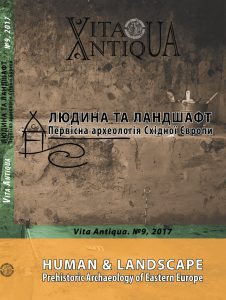 This volume of scientific works dedicated to contemporary researches of the issues of environment – prehistoric societies interaction in Europe. The publication includes materials that demonstrate the interdisciplinary approach to the study of prehistoric sites.
This volume of scientific works dedicated to contemporary researches of the issues of environment – prehistoric societies interaction in Europe. The publication includes materials that demonstrate the interdisciplinary approach to the study of prehistoric sites. 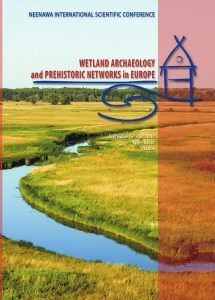 Dear Colleagues,
Dear Colleagues,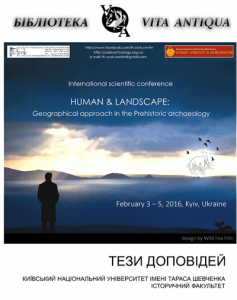
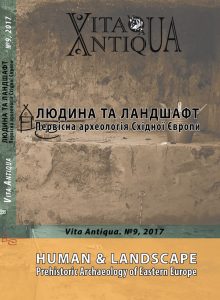
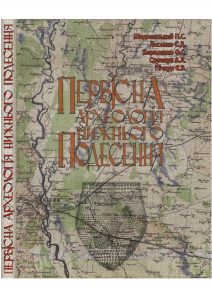 On the base of using of the archaeological sources, this book proposes the attempt of the reconstruction of cultural and historical processes, which were going in prehistoric times on the territory of Lower Desna region. This work clearly concerns two main vectors, in the frames of which the investigation held.
On the base of using of the archaeological sources, this book proposes the attempt of the reconstruction of cultural and historical processes, which were going in prehistoric times on the territory of Lower Desna region. This work clearly concerns two main vectors, in the frames of which the investigation held.